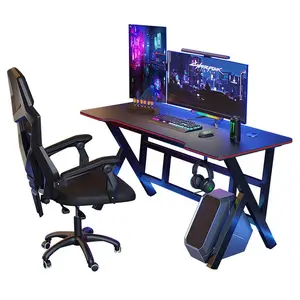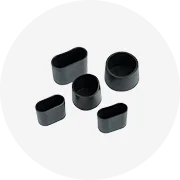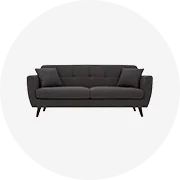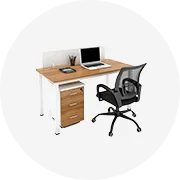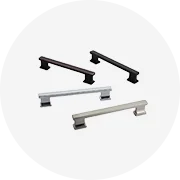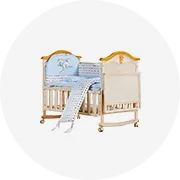Popular in your industry











Related Searches:


























Top categories
About airport seating
As airports evolve into dynamic hubs of activity, the quest for the perfect blend of comfort and style in seating has become paramount. This guide delves into the transformative journey of airport seating solutions, from their sociofugal origins to the modern-day sanctuaries that cater to the digital nomad, the weary traveler, and the aesthetic connoisseur. We'll explore how the evolution of design, integration of technology, and strategic use of materials contribute to the sophisticated landscape of today's airport interiors. Join us as we navigate the ultimate guide to modern airport seating solutions, where functionality meets finesse.
The Evolution of Airport Seating

The design and functionality of airport seating have undergone significant transformations since their inception. The original arrangement of chairs in rigid lines was intended to discourage social interaction, pushing travelers towards commercial areas. This design was complemented by the addition of armrests, which increased usage by providing a sense of personal space among strangers.
In the past, iconic designs set a benchmark for airport seating. These were later enhanced to include features like occasional tables and power outlets, catering to the modern traveler's need to charge mobile devices.
Airport seating is not just about functionality but also about the aesthetic complement to the architecture. High-profile terminals demand seating that matches the quality of their interiors.
The evolution of airport seating reflects a shift towards enhancing passenger satisfaction and overall experience. Today's seating designs prioritize size and comfort to align with the desired ambiance of airports and airlines, while also adhering to safety regulations. The introduction of sleeping pods and the integration of modern technology further illustrate the ongoing innovation in airport seating solutions.
Understanding Modern Airport Seating Solutions
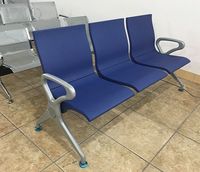
Modern airport design has evolved to meet the diverse needs of travelers, who seek comfort and convenience during their transit. Airports are no longer just about boarding flights; they serve as multifunctional spaces offering various amenities. Contemporary airport seating plays a pivotal role in enhancing the traveler experience. For instance, seating solutions offer travelers convenient power access and uninterrupted workspace, with a design that prioritizes space efficiency and modern aesthetics.
Modern seating series exemplify modern airport seating by providing privacy and comfort. The design allows travelers to face different directions, reducing distractions and creating a sense of personal space. Similarly, private refuge options with integrated power access cater to the needs of passengers who require a quiet space to work or relax.
At certain airports, curved seating elements have been utilized to maximize seating around structural columns, turning potential space issues into innovative seating solutions. These examples highlight the importance of furniture in shaping the travel experience, where functionality and aesthetic must coexist to meet the demands of today's airport patrons.
Types of Airport Seating Available on Alibaba.com
Alibaba.com showcases a diverse range of airport seating options to accommodate the varying needs of public spaces. Among the offerings, one can find multi-seater configurations, such as 2, 3, 4, and 5-seater units, designed to serve different waiting area sizes and passenger volumes. The seating solutions include options like the waiting room furniture chairs, which are available in various colors, providing both aesthetic appeal and functional design.
For environments that require a more relaxed setting, sofa lounge seating benches are available, featuring a comfortable design. These are particularly suited for hospital and clinic waiting areas. In addition, there are solid reception chairs with a sleek fashion design, crafted from high-quality materials, which offer a modern touch to any waiting room.
In terms of space efficiency, retractable seating with tip-up seats is an innovative solution that maximizes the use of available space in halls and terminal areas. For durability and ease of maintenance, options like the metal link chairs and padding benches are offered, which are capable of withstanding heavy public use.
Lastly, the range includes specialized seating such as the padding lounge benches, which are designed for passenger comfort during long waits. These seating options reflect the current trends in airport furniture, focusing on durability, comfort, and style, suitable for various public areas beyond just airports.
Key Features of Modern Airport Seating
Modern airport seating has evolved to meet the demands of contemporary travelers, focusing on comfort and convenience. Premium seating options offer higher backrests, effective lumbar support, and thick cushions, ensuring passengers can relax while waiting for their flights. A significant feature of these modern seats is the integration of power modules, which allow travelers to recharge their electronic devices directly from their seats. These modules are designed to attach seamlessly to the seating structure and provide both traditional power and USB connectivity.
Safety and performance are also paramount in modern airport seating designs. Power modules come with built-in safety features that protect against short circuits and power surges, ensuring travelers' electronic devices are safeguarded while charging. The ergonomic design of these seats is tailored to support the body comfortably, reflecting the core emphasis on passenger well-being in today's airport furnishings.
The strategic placement and layout of seating play a crucial role in enhancing the overall airport experience. By optimizing space for passenger flow and accessibility, modern seating arrangements contribute to creating a more efficient and traveler-friendly environment. The focus extends beyond mere functionality, with aesthetic considerations also being a key aspect of the design process, aiming to complement the architectural elements of the airport and contribute to a cohesive visual experience.
Materials Used in Airport Seating Manufacturing
Airport seating is crafted from a variety of materials, each selected for its unique properties and suitability for public use. Aluminum alloy is a popular choice for its robustness and durability, offering significant resistance to corrosion. This material is particularly valued in airport chairs for its fire-resistant qualities, though this can reflect in a higher cost compared to other materials.
Steel is another common material used in the construction of airport chairs. It is often shaped and detailed through precision processes and finished with a decorative spray surface. This type of seating is a staple in high-traffic areas such as airports, stations, and docks, thanks to its strength and ease of maintenance.
Plastic airport chairs provide versatility and flexibility in design. They can be customized to include additional features such as seat and back cushions, enhancing comfort for waiting passengers. The adaptability of plastic seating allows for a range of design options to suit various airport aesthetics and functional requirements.
Ergonomics and Comfort: The Core of Airport Seating

Ergonomic design is paramount in the creation of airport waiting chairs, focusing on the comfort and well-being of travelers. To cater to diverse body types, these chairs should feature a seat that is sufficiently wide, a backrest tall enough to support the shoulders and neck, and a seat depth that allows for leg comfort.
Lumbar support is critical in preventing lower back pain, a common issue with waiting chairs. Ergonomically designed airport chairs should include a contoured backrest that upholds the spine's natural curvature, emphasizing the lumbar area.
The choice of materials for airport chairs is also a significant factor in ergonomic design. Materials should be breathable, facilitating air circulation, and the padding should balance firmness and comfort to support the body without causing discomfort.
Armrests contribute to the ergonomic quality of airport waiting chairs by supporting the arms and shoulders at the correct height and angle. Additionally, the layout of the seating should promote good posture and allow for easy movement and accessibility, enhancing the overall waiting experience.
Design and Style: Enhancing Traveler Experience
Innovative airport design trends are reshaping the traveler experience, with a particular focus on enhancing comfort and style through modernized seating solutions. Airports are moving away from the traditional beam seating that has dominated terminals for decades. Instead, they are introducing seating options that cater to the needs of today's travelers, who often arrive earlier and require a comfortable place to work or relax. This shift includes the implementation of laptop bars and a variety of seating configurations, allowing passengers to choose how they spend their pre-flight time.
The design of these new seating areas takes into account the desire for calming spaces. Strategies to engage passengers' senses are being employed, such as the integration of natural elements like trees and lower light levels, which contribute to a serene environment. Additionally, the concept of bringing the outdoors inside is gaining traction, with enclosed zones that offer access to natural enclaves within the terminal, providing a refreshing change from the conventional airport atmosphere.
These design enhancements are not just about aesthetics; they also serve to create a more personalized and quiet environment. The emergence of 'quiet or silent terminals' is a testament to this, where traditional announcements are replaced with digital messaging directly to passengers' smartphones. This approach not only reduces noise pollution but also contributes to a more tailored and peaceful waiting experience. The modern airport seating thus becomes a crucial element in the overall design ethos, aiming to improve the journey for every traveler.
Advantages of Sourcing Airport Seating from Alibaba.com
Sourcing used airport seating from Alibaba.com presents several advantages for businesses looking to furnish their waiting areas effectively. The platform offers a diverse range of seating options, from single seats to long benches, catering to different spatial and design requirements. The materials predominantly used in these products are wood and steel, known for their durability and strength, making them suitable for high-traffic areas like airports, hospitals, and clinics. Wooden chairs are a popular choice in settings that desire a warm and inviting atmosphere, such as salons and modern office guest areas, while steel benches are valued for their robustness in public spaces.
The seating solutions available on Alibaba.com are designed with various environments in mind, ensuring that there is a match for any color scheme or decor. For instance, medical and dental waiting rooms often opt for seating with neutral colors to evoke a sense of calm, whereas vibrant colors can be selected to energize spaces such as beauty salons. The versatility of the seating options extends to their application, with products suitable for indoor and outdoor use, highlighting the platform's commitment to providing adaptable furniture solutions.
Businesses benefit from the competitive pricing and the possibility of bulk purchases, which is particularly advantageous for large-scale projects. Alibaba.com's range of used airport seating is not only cost-effective but also allows for customization in terms of design and quantity, ensuring that buyers can procure seating that aligns with their specific aesthetic and functional needs. This flexibility, combined with the convenience of online selection and the availability of various shipping options, makes Alibaba.com a practical source for purchasing commercial seating.
Installation and Maintenance: Ensuring Long-Term Use
The maintenance of airport seating is integral to ensuring their longevity and functionality. Seats designed for airports come with features that facilitate easy cleaning and upkeep. For instance, benches often include cut-outs in the backrests to aid in the removal of debris and forgotten items. The design of the frames also allows for sufficient space underneath, making it easier for maintenance staff to clean the floor. Additionally, seating options are available with surfaces that support disinfection, contributing to the overall hygiene of the airport environment. Some seating solutions are equipped with materials that are not only resistant to stains but are also durable enough to withstand the rigors of high-traffic areas. These features are essential for maintaining a clean and safe environment for travelers, reflecting the importance of practical design in airport seating maintenance.
Conclusion
In conclusion, the modern airport is more than a transit point; it's a space where comfort, style, and functionality converge to enhance the traveler's experience. The evolution of airport seating has kept pace with the changing needs of passengers, offering ergonomic designs that provide support and comfort during waits. Innovations in materials and maintenance ensure longevity and hygiene, while the integration of technology caters to the connected world. Alibaba.com stands as a testament to this progress, offering a plethora of seating solutions that marry durability with design, and convenience with cost-effectiveness. As we have seen, the right seating can transform an airport from a mere waypoint to a destination in itself, where every seat tells a story of comfort and every arrangement speaks of style. The future of airport seating is not just about a place to sit—it's about creating an experience, and as this guide shows, the journey is just as important as the destination.

